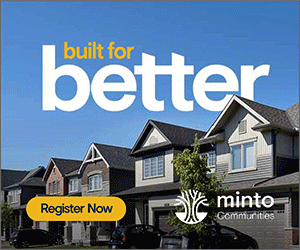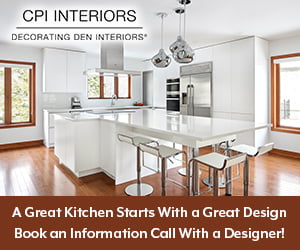Before you even hang a picture in your new home, it’s a good idea to have a master design plan. It’s not something we hear much about, but a master plan for renovations is the most valuable investment you can make in your home because it will ensure that every other investment is like the proverbial cup that runneth over rather than a sieve.
A master design plan resembles the management tool known as systems thinking, where every element is considered through the lens of how it impacts every other element. What happens when you don’t apply systems thinking? A colleague recently shared the penultimate example. His company name is DECUMANUS, and he had the name painted on the side of his truck; unfortunately, when he opened his door the logo was truncated to read ANUS.
Dysfunctional House Syndrome
Without a master plan, you can easily wind up with what I call Dysfunctional House Syndrome. When that syndrome takes hold, decisions are made without examining their impact. For instance, you add a kitchen island that’s just a little too big and doesn’t allow the door to the basement to lay flat against the wall anymore so now the door is always ajar in the perfectly appointed kitchen and messes with the traffic flow.
MORE: Addition vs. renovation — do you have to add on?
Another thing I see a lot of is renovating a space without considering future needs, like finishing the basement before doing the upstairs. That invariably results in ripping out at least the basement ceiling to renegotiate wiring, mechanical and plumbing systems for the new layout upstairs, and it’s such a tragic waste of materials, time and money.
Another example: we (read I) decide it would be great to have the laundry upstairs and ingeniously tuck a 24-inch unit into the bathroom, and then the washing machine overflows… twice! I can’t believe I didn’t add a floor drain or at least a pan.
New homes not immune
Sadly, new homes aren’t immune and too often the dysfunction is built in right from the start.
We recently used airbnb to rent a nicely decorated brand new home in which the foyer and powder room took up almost as much space as the combined kitchen, dining and living room. The result? The dining room couldn’t properly accommodate even a modest sized table, which had to be tucked into a corridor. And It would have been hard to design a less effective kitchen: it looked pretty slick and even had a computer recessed into the door of the fridge but had no prep or storage space even though it somehow managed to squeeze in the requisite barstools.
It was heart wrenching to see all those precious resources poured into a space that looked pretty great but in reality didn’t function properly. Unfortunately, design flaws like these often don’t become apparent until a family has lived in a home for awhile and end up having to gut and redesign spaces well before their time.
Children’s game offers a clue to master design plan
To avoid such design disasters, you need to start with a master plan. When I was a kid, the highlight of every birthday party was pin the tail on the donkey. In a similar style to this childhood game, I’d like to propose that every house warming party should host a white board where everyone can share a vision for how the house might be developed to meet its family’s needs now and as they evolve. This blue sky approach to all the possibilities might keep owners from hanging a few seemingly innocuous pictures only to discover they’ve exposed their anus.
Most design ideas are market-driven, and it’s time we asked designers to offer us a master design plan when we purchase a house. For most of us, our homes are the biggest investment we will ever make and we can’t afford to be cavalier about this investment on a personal or planetary level. To borrow a phrase I happen to love, it’s one of our better opportunities to make ourselves richer than we think.
Here’s a delightful site that eloquently highlights the exponential value of design and systems thinking.






